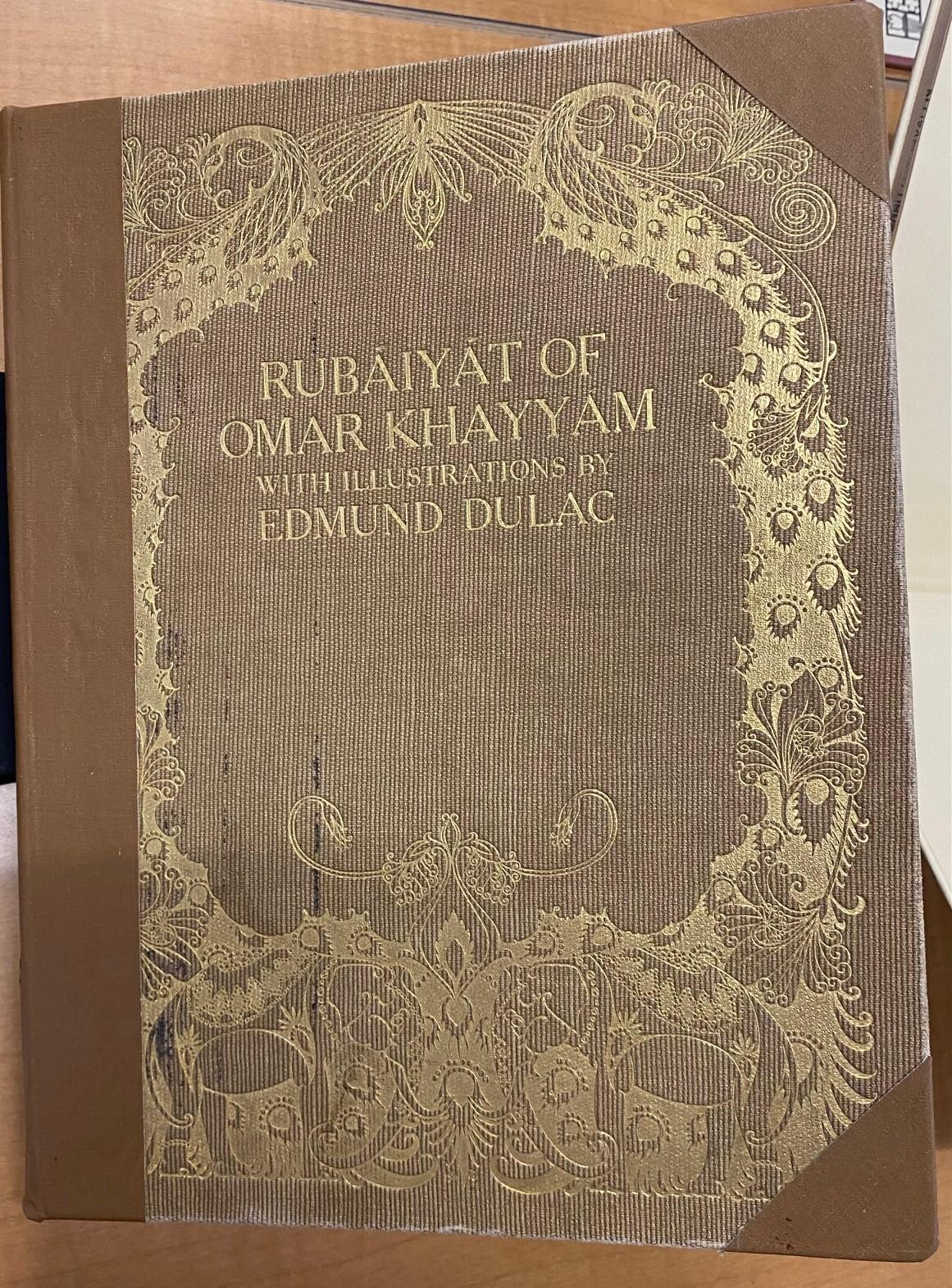Cultural appropriation has been an issue for a long time and one could argue that cultural appropriation was at its height during the Victorian and Edwardian eras of England. In Barbara Black’s book On Exhibit: Victorians and Their Museums, Black argues that Edward Fitzgerald’s translation of Rubáiyát of Omar Khayyám being a common choice for a gift was a way to appropriate Eastern culture during this time as it was treated less as a means of substance for its content and valued more so because of the aesthetic value of the visuals and the overall vibe it gave off. The edition that I took a look at is from the year 1909 and it really seems to validate Black’s claims that a lot of these editions were indeed Orientalist and were treated as nothing more than a trend made by and for rich white Europeans to enjoy.
For one thing, the illustrations in my edition appear to be very stereotypically Orientalist (as they would have described them back then) and there are plenty of motifs that are commonly associated with the east in my edition. For example, there are ample amounts of peacock motifs both on the cover (see FIGURE 1) and on the title page (see FIGURE 3). While peacocks do have significant cultural symbolism in middle eastern culture and while you could argue that the white, British illustrator Edmund Dulac understood this significance when he chose peacocks to decorate the edition, peacocks are actually a bird commonly found in India (which was under British rule during the British Raj from 1858 to 1947 (and this edition was published during this time), it is likely that the Dulac was just picking a random bird from the east that he thought was pretty for aesthetic purposes. Since the peacocks were designed with some golden ink, the argument in favor of them just being used for aesthetic purposes rather than as a way to honor the culture of the text further emphasizes this point.
Black notes that there was a bit of power dynamic between the orient and the occident and the occident tended to romanticize the orient this is again demonstrated in the illustrations (see FIGURE 4 and 5). There are two possibilities that support the idea that there is a power dynamic taking place here with this edition by the way of appropriating culture and turning it into a trend thanks to white people when it was previously looked down upon. The first (and less likely) argument is that, aside from the stereotypical eastern looking artwork, there are some illustrations that are done almost entirely in blue in a way that is reminiscent of Pablo Picasso’s Blue Period and some illustrations that are done with lots of rosy warm tones in a way that is reminiscent of Picasso’s Rose Period. Since Picasso was around and his Blue Period and his Rose Period were both happening around the same time that Dulac was making his illustrations for this edition, it is possible that Dulac was influenced by Picasso (a trending artist in the West during this time) and using one trend to enhance another trend. The second (and more likely) argument is that Dulac was in the aesthetic movement and therefore was just cherry picking the aspects of the culture that he felt were the most aesthetically pleasing while ignoring the different nuances that the culture has. This edition showcases the power dynamic that the west had over the east during this time period by turning this culture that they originally looked down upon and thought was shameful into a trend for white people to collect artifacts of rather than as an actual culture.
Towards the begining of the second chapter of her book "Figuritive Articulation of an All-Obliterated Tongue: Edward FitzGerald's Rubaiyat of Omar Khayyam and the Politics of Collecting", Black calls the Victorian treatment of The Rubaiyat as a "domesticated exotic" (---Black, p. 50) meaning that it was a piece of a foregin culture to the Victorian English, who took it and treated it as nothing more than a collector's item (Black, p. 49-50). This edition really showcases this mindset due to the overwhelming amount of aesthetic illustrations and stereotypical motifs in the artwork, it is impossible to argue in favor of this edition being truly appreciative of the culture and of the text.
SOURCES:
Black, Barabra J. On Exhibit: Victorians and their Museums. The University Press of Virginia. 2000
Khayyam, Omar (translation: Fitzgerald, Edward). Rubaiyat of Omar Khayyam. New York, Hodder and Stoughton. 1909





